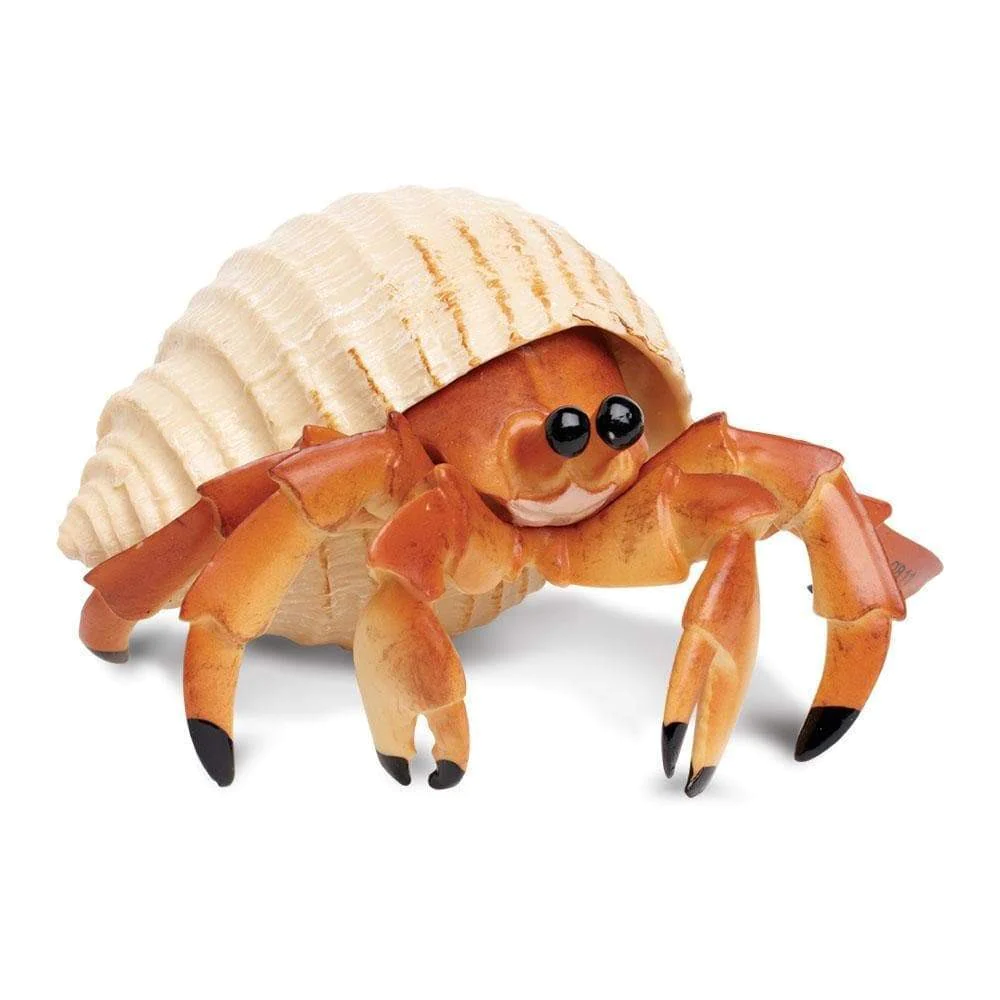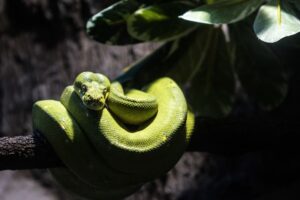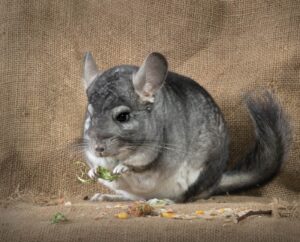Table of Contents
ToggleIntroduction
Hermit crabs are intriguing and unusual pets that win many people’s affection because of their endearing personalities and the characteristic shells they carry. On the other hand, giving the appropriate care for these itty-bitty critters can be more complex than you might initially imagine it would be.
Hermit crab care will be covered in depth in this guide, including selecting the best habitat for your hermit crabs and assuring their overall health and happiness. This book has all you need to know about hermit crabs, regardless of whether you are seeking to learn more about them for the first time or have some experience with them previously.
What Are Hermit Crabs?
Hermit crabs, often referred to as “land hermit crabs,” are not true crabs. They belong to the family Paguroidea and are known for their unique habit of occupying empty shells, which they use as protective homes.
These tiny crustaceans have soft abdomens and lack the protective exoskeleton found in typical crabs. To compensate for this vulnerability, hermit crabs scavenge and move into the shells of marine mollusks they find abandoned.
Why Keep Hermit Crabs As Pets?
Hermit crabs have become popular as pets for several reasons:
Low Maintenance: They are relatively easy to care for, making them suitable for beginners and experienced pet owners.
Fascinating Behaviors: Hermit crabs exhibit exciting behaviors, such as shell-swapping, climbing, and burrowing, making them engaging to observe.
Variety of Species: Hermit crabs come in various species and colors, allowing for personal preferences in choosing a pet.
Longevity: With proper care, hermit crabs can live for many years, providing companionship for their owners.
Now that you have a general understanding of hermit crabs let’s explore the various aspects of caring for these captivating creatures.
Selecting The Right Hermit Crab Species
Before bringing hermit crabs into your home, choosing the suitable species that suits your preferences and environment is essential.
Common Hermit Crab Species
Two common species of hermit crabs kept as pets are:
Purple Pinchers (Coenobita clypeatus): These are among the most popular species due to their striking purple claws. They occur to be
Caribbean wilderness.
Ecuadorian Hermit Crabs (Coenobita compressus): Known for their small size and reddish-brown coloration, these hermit crabs are native to Ecuador and are a favorite choice for beginners.
Considerations For Species Selection
The following criteria should be taken into account while choosing a species:
- Size: Different species have varying requirements, so ensure your chosen species fits comfortably in the enclosure you plan to provide.
- Availability: Some species may be more readily available in your area than others.
- Climate Compatibility: Check if the climate and temperature in your region are suitable for the chosen species, as some are more sensitive to environmental conditions.
Setting Up The Hermit Crab Habitat
You must provide them with a suitable environment for your hermit crabs’ happiness and health. Here’s how to set up their enclosure:
Enclosure Options
- Glass Aquarium: A glass aquarium is a common choice for hermit crab housing. Make sure the cover is tight so nothing can get out.
- Plastic Terrarium: Plastic terrariums are lightweight and come in various sizes. Make sure they have proper ventilation.
- Plastic Storage Bin: Large plastic storage bins can be suitable for multiple hermit crabs. Just ensure they are escape-proof and well-ventilated.
Substrate
Hermit crabs need a deep substrate layer for burrowing and molting. A suitable substrate mix includes coconut coir, sand, and peat moss. The substrate should be 5-6 inches deep to accommodate burrowing behavior.
Conditions Of Heat And Dampness
Keep the environment between 75 and 85 degrees Fahrenheit (24 and 29 degrees Celsius) and 70 and 80 percent humidity. Because of their susceptibility to temperature changes, maintaining the ideal humidity and temperature for hermit crabs is essential for their well-being.
Lighting
Hermit crabs are nocturnal and do not require special lighting. However, providing a natural day-night cycle through ambient room lighting benefits their well-being.
Shells and Hideouts
Offer a variety of empty shells in different sizes and shapes to allow your hermit crabs to switch homes as they grow. Additionally, provide hiding spots, such as coconut huts or miniature caves, to reduce stress and promote security.
Feeding Your Hermit Crabs
Your hermit crabs will live longer and be healthier if you feed them a balanced diet. Their diet should consist primarily of:
Commercial Hermit Crab Food
Commercial hermit crab food is available in pet stores and provides essential nutrients. Look for high-quality pellet or granule options and feed them according to the package instructions.
Fresh Fruits and Vegetables
Hermit crabs enjoy a variety of fresh fruits and vegetables, including:
- Apples
- Bananas
- Carrots
- Spinach
- Cucumber
- Coconut
- Mango
- Papaya
To maintain cleanliness, offer a mix of finely chopped or grated items and remove uneaten portions.
Protein Sources
Protein is crucial for hermit crab growth and health. Provide sources of protein like:
- Cooked egg (boiled or scrambled)
- Dried shrimp or krill
- Mealworms
- Fish flakes
- Offer protein-rich foods a couple of times a week.
Calcium Supplements
Hermit crabs require calcium for shell maintenance and growth. You can provide calcium supplements in crushed cuttlebone or powdered calcium available at pet stores.
Freshwater and Saltwater
Place shallow dishes of fresh dechlorinated water and marine-grade saltwater (prepared with aquarium salt mix) in the enclosure. Hermit crabs need both types of water to maintain proper osmoregulation.
Maintaining A Clean Environment
Maintaining a clean hermit crab habitat is essential to forestall potential health problems and provide your creatures with a comfortable living environment.
Daily Checks
- Remove any uneaten food to prevent mold and bacterial growth.
- Ensure the water dishes are clean and full of fresh water.
Weekly Cleaning
- Gently stir the substrate to aerate it and help reduce odors.
- Replace a small portion of the substrate to maintain cleanliness.
- Clean and disinfect any decorations or hideouts as needed.
Molting Care
Hermit crabs are sensitive to injury during molting, so they require a secure and quiet environment. Be careful to supply them with a substrate that has a sufficient depth for burrowing, and avoid disturbing them while they are at their most vulnerable.
Handling And Interaction
Because hermit crabs are fragile creatures who are quickly stressed, it is best to handle them as little as possible. If you do choose to engage in conversation with them:
- Before touching anything, make sure your hands are clean.
- Take it easy and be kind as you approach them.
- Hold them in a cupped hand if you don’t want to risk dropping or squashing them.
- Sessions of handling should be kept brief and infrequent.
Remember that while hermit crabs may not show affection like more traditional pets, they are enjoyable to observe and care for.
Health And Common Issues
Regular observation is essential to monitor the health of your hermit crabs. Look for signs of common issues, including:
Symptoms of a Healthy Hermit Crab
- Active and alert behavior.
- Smooth and intact shell.
- Normal eating and drinking.
- Consistent and regular molting.
Common Health Issues
- Shell damage or abnormalities.
- Lethargy or decreased activity.
- Changes in appetite.
- Discolored or swollen limbs.
- Signs of stress, such as hiding excessively.
If you notice any of these issues, consult a veterinarian experienced in hermit crab care.
Breeding And Reproduction
Breeding hermit crabs can be challenging and unsuitable for all enthusiasts. Here are some insights into the breeding and reproduction of hermit crabs:
Reproductive Behaviors
- Male hermit crabs may use courtship displays to attract females, including clicking or chirping sounds.
- Females store sperm packets from mating and use them to fertilize their eggs when conditions are favorable.
Caring for Baby Hermit Crabs
- Baby hermit crabs, known as “larvae,” require a marine environment for development.
- Rearing hermit crab larvae is a complex process that demands specialized equipment and knowledge.
Challenges of Breeding
It can be challenging to successfully breed hermit crabs in captivity due to the intricacy of caring for hermit crab larvae and the precise environmental parameters required for reproduction. It is due to the specialized conditions needed for procreation.
Conclusion
When you give hermit crabs the correct location, food, and attention, caring for them can be a satisfying and gratifying experience. Hermit crabs thrive in solitary settings. It is essential to remember that hermit crabs have specific requirements, as this will ensure that they live long and happy lives.
Your knowledge of hermit crabs and dedication to providing their health and happiness will pay off as a fascinating and pleasurable companionship with these extraordinary crustaceans as you start your journey as a hermit crab owner.







